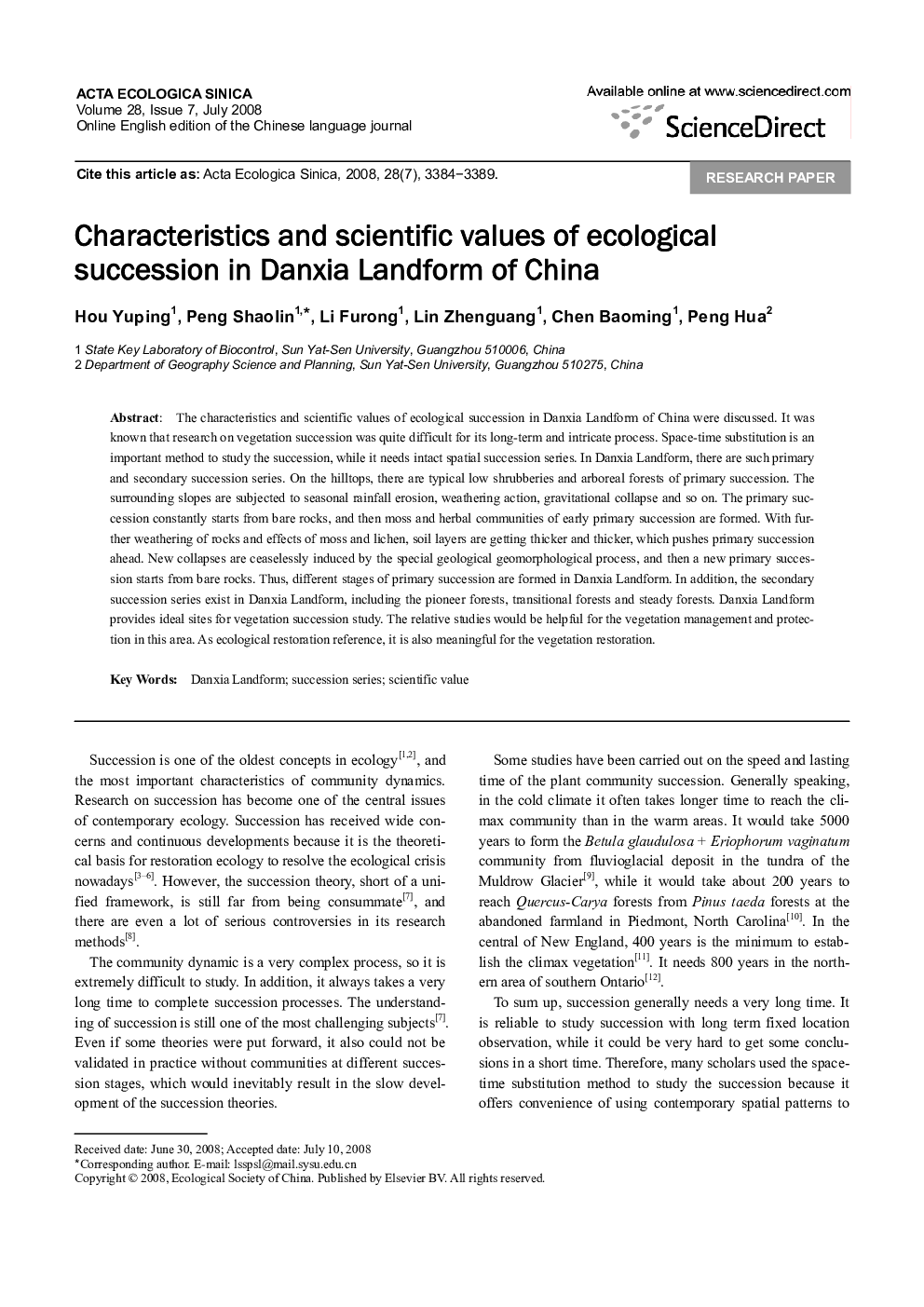| کد مقاله | کد نشریه | سال انتشار | مقاله انگلیسی | نسخه تمام متن |
|---|---|---|---|---|
| 4380332 | 1303985 | 2008 | 6 صفحه PDF | دانلود رایگان |

The characteristics and scientific values of ecological succession in Danxia Landform of China were discussed. It was known that research on vegetation succession was quite difficult for its long-term and intricate process. Space-time substitution is an important method to study the succession, while it needs intact spatial succession series. In Danxia Landform, there are such primary and secondary succession series. On the hilltops, there are typical low shrubberies and arboreal forests of primary succession. The surrounding slopes are subjected to seasonal rainfall erosion, weathering action, gravitational collapse and so on. The primary succession constantly starts from bare rocks, and then moss and herbal communities of early primary succession are formed. With further weathering of rocks and effects of moss and lichen, soil layers are getting thicker and thicker, which pushes primary succession ahead. New collapses are ceaselessly induced by the special geological geomorphological process, and then a new primary succession starts from bare rocks. Thus, different stages of primary succession are formed in Danxia Landform. In addition, the secondary succession series exist in Danxia Landform, including the pioneer forests, transitional forests and steady forests. Danxia Landform provides ideal sites for vegetation succession study. The relative studies would be helpful for the vegetation management and protection in this area. As ecological restoration reference, it is also meaningful for the vegetation restoration.
Journal: Acta Ecologica Sinica - Volume 28, Issue 7, July 2008, Pages 3384-3389